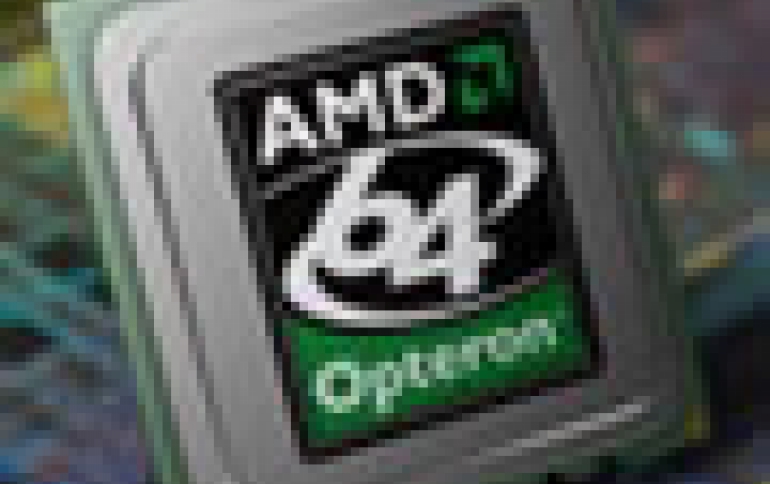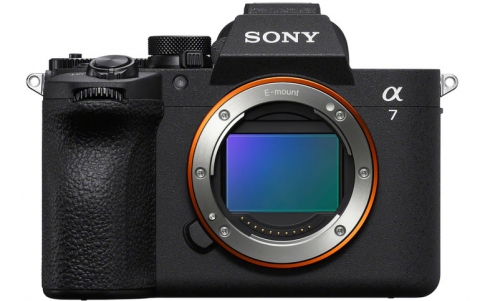
AMD Announces "Shanghai" Platform, New 45nm Quad-Core AMD Opteron Processors
AMD has started selling the new generation of its Opteron quad core processors for servers, AMD announced on Wednesday, nearly one year after Intel launched its own 45 nanometer chip.
After a troubled launch of its earlier Barcelona chip, AMD waited until the new chip, called "Shanghai," was actually in distribution to make its formal announcement.
The Shanghai chip has high energy efficiency, AMD says. Compared to the Barcelone quad-core chip, Shanghai delivers up to 35 percent more performance with up to a 35 percent decrease in power consumption at idle, according to the company. The chips also feature a number of new power-saving technologies. AMD Smart Fetch technology can help reduce power consumption by allowing cores to enter a "halt" state during processing idle times with zero impact on application performance and compliments AMD CoolCore technology, which reduces power to unused sections of each processor to further reduce power consumption.
 The latest Quad-Core AMD Opteron processors enhance AMD?s Direct Connect Architecture and offer a balanced and scalable solution to support today?s heterogeneous computing environments, AMD said.
The latest Quad-Core AMD Opteron processors enhance AMD?s Direct Connect Architecture and offer a balanced and scalable solution to support today?s heterogeneous computing environments, AMD said.
"Flawless execution in bringing the 45nm Quad-Core AMD Opteron processor to market early results in new performance leadership on x86 servers," said Randy Allen, senior vice president, Computing Solutions Group, AMD. "In concert with our OEM and solution provider partners, AMD is addressing the need for enterprises to focus on their bottom line while giving them the innovations they need to build for the future. This enhanced AMD Opteron processor represents the most dramatic performance and performance-per-watt increases for AMD products since the introduction of the world?s first x86 dual-core processors by AMD nearly four years ago. Simply put, the Quad-Core AMD Opteron processor is the right technology at the right time."
Through improvements to AMD?s Direct Connect Architecture and AMD-Virtualization (AMD-V) technology, 45nm Quad-Core AMD Opteron processors already power nine global OEM servers specifically designed for virtualization.
The new processors deliver faster "world switch" time, which enhances virtual machine efficiency, and feature improved Rapid Virtualization Indexing, AMD?s AMD-V that reduces the overhead associated with software virtualization.
The enhanced Quad-Core AMD Opteron processors also offer higher CPU clock frequencies in the same power envelope in comparison to previous generations of the Quad-Core AMD Opteron processor.
A 200 percent increase in Level 3 cache size to 6MB helps speed memory-intensive applications like virtualization, database, and Java.
DDR2-800 memory support delivers greater memory bandwidth than current AMD Opteron processors. In addition, AMD claims that the DDR2-800 memory "remains significantly more energy-efficient than Fully-Buffered DIMM technology found in competitive offerings."
AMD said that enhancements to the AMD Direct Connect Architecture with coherent HyperTransport 3.0 technology, provide up to 17.6GB/s of bandwidth for processor-to-processor communication are planned for Q2 2009.
The new processors also fit into the existing Socket 1207 architecture and are also planned for use in the upcoming "Istanbul" processor, the next generation of AMD Opteron processors.
AMD's global OEM and system-builder partners are expected to begin shipping their next-generation systems powered by the enhanced Quad-Core AMD Opteron processor this month.
The latest Quad-Core AMD Opteron processors at the 75-watt ACP ranging from 2.3 to 2.7 GHz are available immediately, with enhanced Quad-Core AMD Opteron HE (55-watt) and SE (105-watt) processors planned to follow in Q1 2009.
Upcoming 45nm Desktop Processors AMD also plans to bring this higher-performance and more energy efficient 45nm processor technology to the desktop PC market in Q1 2009 with the AMD platform codenamed "Dragon." This platform will be the second generation AMD performance desktop platform, featuring all next-generation components in comparison to the first generation AMD "Spider" platform released in 2008. The AMD "Dragon" platform is designed to harness the power of fusion by optimizing the performance of new 45nm AMD Phenom II X4 quad-core processors with a AMD 700 Series chipsets and ATI Radeon HD 4000 series graphics.
AMD said it is looking to increase market share with the server. The market intelligence firm iSuppli said it had only 12 percent in the third quarter.
The Shanghai chip has high energy efficiency, AMD says. Compared to the Barcelone quad-core chip, Shanghai delivers up to 35 percent more performance with up to a 35 percent decrease in power consumption at idle, according to the company. The chips also feature a number of new power-saving technologies. AMD Smart Fetch technology can help reduce power consumption by allowing cores to enter a "halt" state during processing idle times with zero impact on application performance and compliments AMD CoolCore technology, which reduces power to unused sections of each processor to further reduce power consumption.
 The latest Quad-Core AMD Opteron processors enhance AMD?s Direct Connect Architecture and offer a balanced and scalable solution to support today?s heterogeneous computing environments, AMD said.
The latest Quad-Core AMD Opteron processors enhance AMD?s Direct Connect Architecture and offer a balanced and scalable solution to support today?s heterogeneous computing environments, AMD said.
"Flawless execution in bringing the 45nm Quad-Core AMD Opteron processor to market early results in new performance leadership on x86 servers," said Randy Allen, senior vice president, Computing Solutions Group, AMD. "In concert with our OEM and solution provider partners, AMD is addressing the need for enterprises to focus on their bottom line while giving them the innovations they need to build for the future. This enhanced AMD Opteron processor represents the most dramatic performance and performance-per-watt increases for AMD products since the introduction of the world?s first x86 dual-core processors by AMD nearly four years ago. Simply put, the Quad-Core AMD Opteron processor is the right technology at the right time."
Through improvements to AMD?s Direct Connect Architecture and AMD-Virtualization (AMD-V) technology, 45nm Quad-Core AMD Opteron processors already power nine global OEM servers specifically designed for virtualization.
The new processors deliver faster "world switch" time, which enhances virtual machine efficiency, and feature improved Rapid Virtualization Indexing, AMD?s AMD-V that reduces the overhead associated with software virtualization.
The enhanced Quad-Core AMD Opteron processors also offer higher CPU clock frequencies in the same power envelope in comparison to previous generations of the Quad-Core AMD Opteron processor.
A 200 percent increase in Level 3 cache size to 6MB helps speed memory-intensive applications like virtualization, database, and Java.
DDR2-800 memory support delivers greater memory bandwidth than current AMD Opteron processors. In addition, AMD claims that the DDR2-800 memory "remains significantly more energy-efficient than Fully-Buffered DIMM technology found in competitive offerings."
AMD said that enhancements to the AMD Direct Connect Architecture with coherent HyperTransport 3.0 technology, provide up to 17.6GB/s of bandwidth for processor-to-processor communication are planned for Q2 2009.
The new processors also fit into the existing Socket 1207 architecture and are also planned for use in the upcoming "Istanbul" processor, the next generation of AMD Opteron processors.
AMD's global OEM and system-builder partners are expected to begin shipping their next-generation systems powered by the enhanced Quad-Core AMD Opteron processor this month.
The latest Quad-Core AMD Opteron processors at the 75-watt ACP ranging from 2.3 to 2.7 GHz are available immediately, with enhanced Quad-Core AMD Opteron HE (55-watt) and SE (105-watt) processors planned to follow in Q1 2009.
Upcoming 45nm Desktop Processors AMD also plans to bring this higher-performance and more energy efficient 45nm processor technology to the desktop PC market in Q1 2009 with the AMD platform codenamed "Dragon." This platform will be the second generation AMD performance desktop platform, featuring all next-generation components in comparison to the first generation AMD "Spider" platform released in 2008. The AMD "Dragon" platform is designed to harness the power of fusion by optimizing the performance of new 45nm AMD Phenom II X4 quad-core processors with a AMD 700 Series chipsets and ATI Radeon HD 4000 series graphics.
AMD said it is looking to increase market share with the server. The market intelligence firm iSuppli said it had only 12 percent in the third quarter.





















